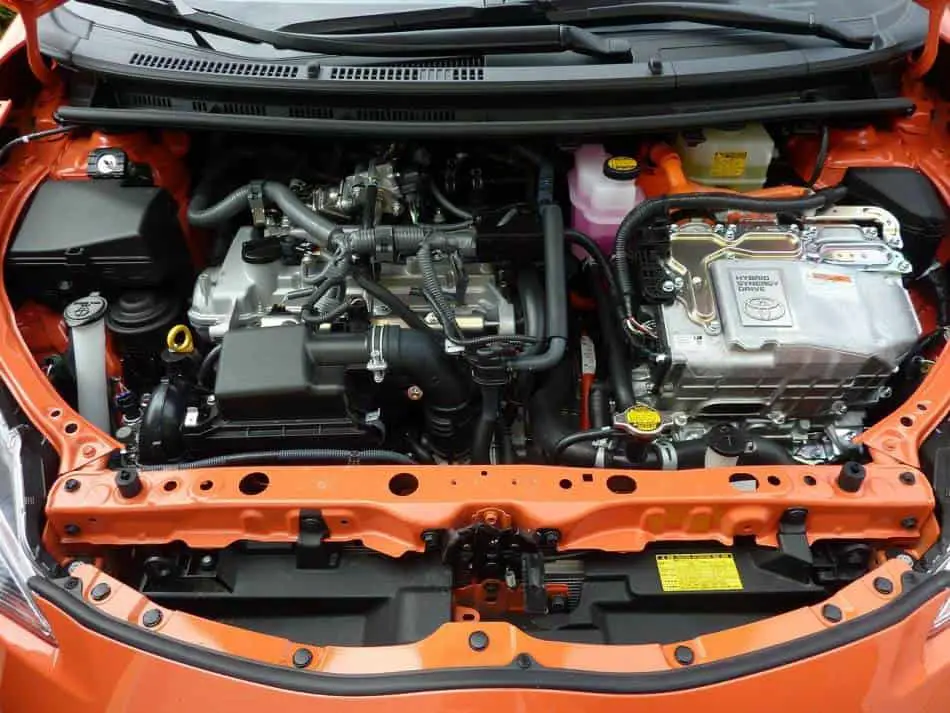 The motor controller in regular cars and electric cars has an important function. They control the power that is delivered to the battery, the microcontroller, and the motors. It is the device that communicates using high-level technology. The motor controller uses a series of logic circuity which makes it different from the motor drive that simply deals with the power that is released to the motors.
The motor controller in regular cars and electric cars has an important function. They control the power that is delivered to the battery, the microcontroller, and the motors. It is the device that communicates using high-level technology. The motor controller uses a series of logic circuity which makes it different from the motor drive that simply deals with the power that is released to the motors.
What does the motor controller do in an electric car? The motor controller in an electric car is a device that sends pulses of various lengths to the motor based on the requirements created by the accelerator or the driver’s petal. The pulse lengths are controlled by the means of pulse width modulation.
What is Pulse Width Modulation for the Motor Controller in an EV?
The pulse width modulation in the controller has a switching transistor that can turn off and on the power that is released to the motor. Due to the OFF and ON feature, there is not a lot of power loss. The transfer of power is linear, super fast and stable.
What is great about this modulation in an EV is that the amplitude of the voltage is constant allowing the motor to run at its full strength instead of having points where the power is decreased.
The timing in the transistor is controlled by a series of capacitors and resistors along with a timer chip. This tech is similar to the process to control the brightness of LEDs or DC lamps which means that it does have a history. This proven track record allows the modulation to work well for the typical electric vehicle.
What are the parts of the motor controller for an electric vehicle?
There are three mains parts contained in a motor controller for an electric vehicle:
- MOSFETS
- diodes
- capacitors
- controller board
- box for the controller
Mosfets are powerful OFF and ON switches.
Mosfet stands for a metal-oxide-semiconductor field-effect transistor.
When an electric vehicle is moving slowly, the MOSFETs are set to be OFF for longer periods. The more speed that you demand, the shorter the gaps between the ON phases, which releases more power.
When a MOSFETS is set to the off phrase, the current that is in the motor coils is pushed off to the diodes. If that current was not sent to a diode, the MOSFET would be overloaded.
The third component in the controller box is the capacitors. They store the electrons that can be used by the motor instead of the electrons having to travel all the way from the battery each time.
If you were to purchase a controller board, you could solder in the components yourself since the placements will be well-labeled in most cases.
How does the throttle system work that communicates with the Motor Controller?
The throttle system is connected to the accelerator in the EV. When you press on it, a signal is sent to the motor controller. The motor controller is instructed to release more power that is stored in the capacitors to the motor inverter.
A motor inverter converts DC, that had been previously stored in the main battery, into AC power that can be used by the motor in the electric car.
This AC power is what the AC motor (common in most electric vehicles, like the Telsa) uses to increase the level of torque and speed for the EV.
What is interesting about this throttle system, is that it involves just one gear. This one gear can create high speeds for the electric vehicle. This simple set-up allows the electric vehicle to have less moving parts than the typical household blender.
The throttle system in an EV has fewer parts than the system in a conventional vehicle. A conventional vehicle tells the throttle to change the air-fuel ratio by way of the vehicle system controller. However, an electric car by-passes this throttling by telling the motor controller to suck power directly from the battery without having to worry about airflow.
Some electrical engineers argue that this lack of airflow in the power control of the electric vehicles means that an electric vehicle does not actually use a throttle. I guess that you could call the use of the term for EVs a misnomer.
How much does the motor controller cost for an electric car?
When you purchase a motor controller, you will get what you pay for. Personally, I would always ensure that there are safety features in a controller because of the high level of voltage that is involved.
If you were to buy a lower end controller, in the $500 range (prices based on 2020 amounts), you will be getting one that might have trouble dealing with the higher voltages. If you need a high voltage, such as 300v, you should stick with the more expensive ones that can easily deal with the high voltages in some electric cars. For instance, a Model 3 Tesla requires a controller that can handle 350 volts.
For a controller for a high voltage, the pricing can reach as much as $5000. You might be forced to get such a controller since it will be required depending on the current of your battery. One company that makes higher-end motor controllers for electric cars is Zilla.
Zilla makes controllers that have a voltage range that reaches 400 volts. This controller has a lot of safety features built into it. It always checks the integrity of the output before it even engages the main contractor which is something that a cheaper controller might not do properly.
Also, some Zilla models of controllers, have a series of dual microprocessors that will cross-check voltages. Each microprocessor can actually shut down the system if need be. This is a huge security aspect.
Are There Any Major Problems Associated with the Motor Controller for an Electric Vehicle?
There does not seem to be any major problems that I could find for the typical motor controller, but there are design obstacles that make things more difficult for motor controllers for electric car engineers.
- Packaging: It is hard to design smaller circuit boards for a controller that is for an electric car. The board has to be small as possible so that it can fit into a compact case to be mounted inside the EV. If you have industrial controllers, you can have a larger circuit board because the main goal is not to stretch the driving range in industrial set-ups.
- High IP rating required: You need to have an IP69 rating for a motor controller that is mounted with an electric car. The first digit is for the dust-free level. 6 is the highest, so the controller has to be able to prevent any dust from entering into the enclosure. The second digit, 9, is for the harmful entry of water into the controller. It is most likely due to the high voltages involved. To be certified at level 9, it will have to be tested using water jets, total immersion, and even high-temperature sprays.
- Vibrations: Electric vehicles can reach the same speeds as conventional vehicles. The motor controller will have to deal with a lot of vibration. The circuit board has to be strong and PCB design needs to ensure that components can be securely soldered. Capacitors have to be of high quality because they tend to be rattled easily due to high vibration. Also, the controller box has to designed to hold the circuit board tightly and it has to be able to be super securely mounted.
- Full Torque at Start-up: An electric car needs to reach full torque right away since it has just one gear. This instantly high torque does place a lot of stress on the components in the motor controller.
- EMC norms are higher for electric cars than industrial norms. EMC stands for Electromagnetic Compatibility. It is a test to see if components are creating high electromagnetic emissions. Also, the EMC commission requires components to handle well exposure to electromagnetic waves.
What Aspects Could be Changed in the Design of Motor Controllers for Electric Cars
A lot of electric cars are not equipped with 4 wheel drive. One change design is add in another motor controller, motor and possibly another battery pack or to replace the battery pack with one that could handle double the normal voltage. The main issue with this is the cooling might become an issue and the weight of the vehicle will be much higher.
The Telsa Model 3 will soon be equipped with a dual motor, and dual motor controller that will increase the speed of the vehicle. One motor controller will be for the front wheels and one will control the back wheels.
Nevertheless, if you have a dual-motor system, you need to have at least one of the motor controllers aid in maintaining a good range for the battery pack. If you have both controllers focus in on speed, then the range will be negatively affected which will displease most consumers.
For the consumers that wish to have a faster EV, the design of the motor controllers is going to have to be greatly enhanced. Presently, the design of most controllers is to up the driving range. Cooling of the components is presently done efficiently.
A focus on speed may cause a cooling issue. If the controller instructs the rotor to spin a lot faster to increase speed, heat may start to build up since this spinning part is not being cooled by coolant.
Besides just more speed, you could focus on the overall power of the EV. To do so, you will need to reprogram the motor controller to draw a higher voltage from the battery pack. A change in the battery pack to one of higher voltage will be required. Also, by reprogramming the controller for more power, you will probably need to redesign the inverters that convert the DC to AC.
